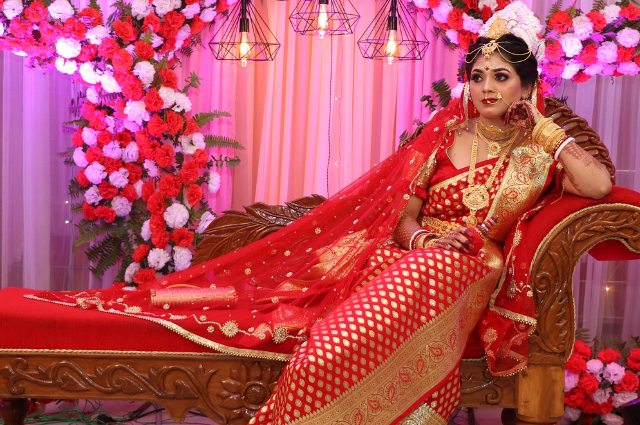
For the other part of the world, gold, silver, and diamonds may just be things to study in chemistry, but for Indians, they are more than just elements! Unlike in many cultures where jewellery is just an ornament, in India, it’s a living proof of how far we have come. It is not merely worn, it is lived! A grandmother’s gold bangles worn by her granddaughter on her wedding, or a father’s ‘kada’ passed on to his son, or a marriage ring worn by the wife, each piece carries an emotional story, blessings, and the love of a bond.
Even in modern times, the emotional weight of jewellery remains intact. The mangalsutra passed down through generations, or a nose ring worn in remembrance, jewellery is a thread of identity. Wearing jewellery is seen as auspicious and signifies love, legacy, and longing. Today, we explore why Indians rate jewellery so highly and why Indian women have 24000 tons of gold alone, much more than the total amount in the USA, Germany, Italy, France, and Russia combined!
Spiritual and Ritual Significance
Gold, silver, and gemstones are worn and offered with deep spiritual meaning, with their presence in rituals almost mandatory. The placement of jewellery on the forehead, ears, neck, wrists, feet, waist, and other body parts corresponds with energy centres in the body.
Gold is considered the metal of the Gods. Associated with the Goddess of wealth and prosperity, Lakshmi, gold is bought and worn during festivals like Akshaya Tritiya. Wearing gold is believed to bring eternal luck. Women wear a lot of gold during weddings as each ornament is a silent prayer for happiness, fertility, and protection. A person’s happiness is also sometimes guessed by the amount of jewellery he/she is wearing!
Silver, a cooler and subtler colour, is linked with purity and healing. Children are often made to wear silver jewellery to ward off negative energies. In rural areas, silver toe rings and anklets are common since they are worn to balance bodily energies and connect the wearer to the Earth. Silver is also commonly used in puja thalis and temple utensils to maintain purity.
Gemstones and diamonds carry astrological significance. For eg:
- Sapphire is a symbol of discipline, focus, and fame.
- Emerald is a symbol of communication, intellect, and creativity.
- Ruby is a symbol of vitality, leadership, and confidence.
- A diamond is a symbol of luxury, beauty, and artistic expression.
- Pearl is a symbol of emotional strength, calmness, and harmony.
Jewellery also holds ritual significance as it is almost compulsory for people to wear something during special occasions. During Diwali, gold is not only worn but also worshipped. Buying gold on Dhanteras is important from a spiritual point of view. In South India, temple jewellery crafted in gold and gemstones is worn during classical dance performances. One of the most beautiful festivals is Karva Chauth, when wives dress most finely and wear the best jewellery to wish for the longevity and prosperity of their husbands. Across these rituals, jewellery is a personal expression of faith and love.
Emotional and Social Importance
Jewellery is a silent witness to life’s important moments. From the first silver anklet gifted to a baby to the gold necklace gifted to a wife, each ornament carries with it the giver's and receiver’s love and emotions. In India, jewellery marks the rites of passage. A child’s ear-piercing ceremony, a teenage girl’s first nose ring, a bride’s jewellery set, these mark moments of transition in life.
Especially for women, jewellery is both a symbol of love and resilience. The jewellery given during marriage, called ‘Stridhan’, is also kept as a backup during times of need. Women often sell or pawn their jewellery to support their families, fund education, or start a business. Jewellery also symbolises remembrance. It's not uncommon for Indians to safely keep the rings, bangles, anklets, and earrings of their parents and grandparents after they pass away.
Jewellery is also being shared among friends now. Young people exchange bracelets, rings, and necklaces as a token of love and gratitude. It won’t be wrong to say that jewellery is the language of love in India, because even the poorest of people protect that only piece of jewellery for love’s sake!
Jewellery in the Contemporary World
People are blending this age-old system of wearing ornaments with modern ideas. Influencers often use jewellery to highlight regional pride and cultural nuance, and they also wear jewellery on modern, bold outfits, giving them a newer look. The presence of social media platforms has also brought rare forms of jewellery making to life. From tribes in Nagaland wearing silver to Meenakari in Rajasthan, jewellery is reclaiming its role as a cultural representative, travelling far beyond the Indian borders, thanks to globalisation. Whether worn in a wedding or posted in a story, jewellery continues to carry spiritual and personal significance, just now also with filters and captions.
Conclusion
Jewellery is love and memory moulded as gold and silver. It is something that makes Indians proud of their roots. It's not just showing off your money; rather, it is holding on to our traditions. Every anklet you hear jingling, or every ring you see shining, or every earring you see dancing, every ornament is waiting to narrate its story. A story of love, transformation, of the past, and the future. Because in India, jewellery is not just worn, it is felt!
